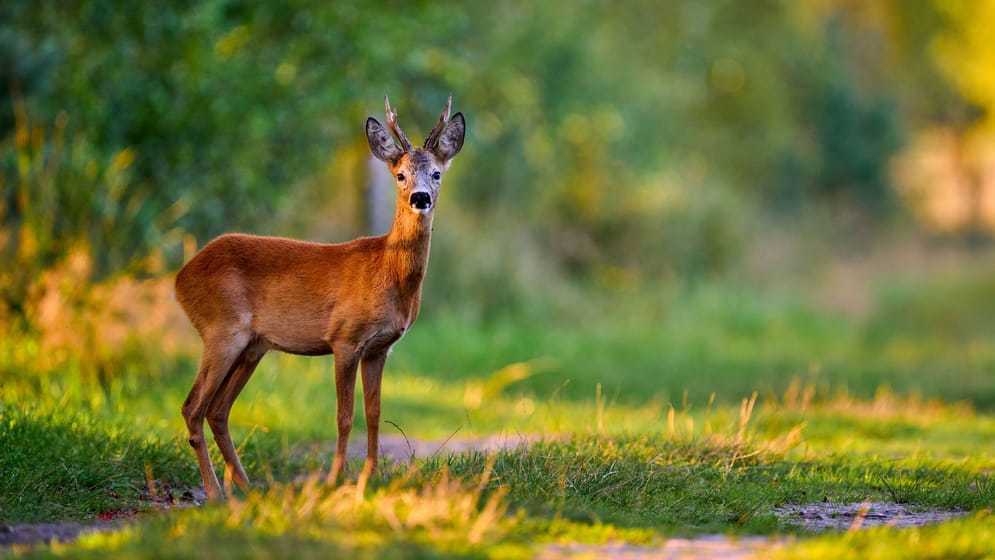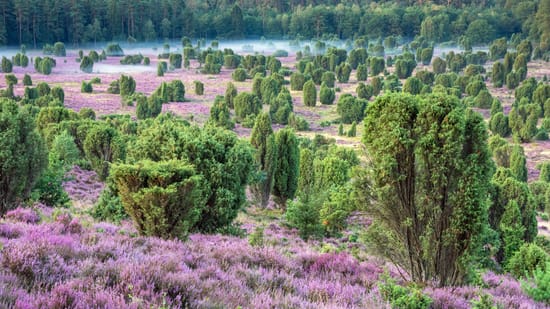A rare genetic variation of roe deer exists exclusively in northwest Germany, puzzling experts for centuries. While Germany is home to about 2.5 million roe deer, these exceptional black specimens remain a scientific enigma.

A unique phenomenon in German forests
Roe deer are abundant throughout Germany, commonly seen in forests, meadows, near highways, and even in urban areas. Most people are familiar with these animals, which can weigh up to 35 kilograms, with an estimated population of 2.5 million in Germany. However, there are extremely rare exceptions found exclusively in northwestern Germany: black roe deer.
While these black deer share the same anatomy, weight, and antlers as their reddish-brown counterparts, their dark gray to deep black coat sets them visually apart from “normal” wild deer. What makes these specially “painted” deer even more unique is their distribution area: they can be found almost exclusively in northwestern Germany, a fact that continues to puzzle experts.
The mystery of limited distribution
Experts call this phenomenon melanism. It’s known that these animals produce increased black pigments due to a genetic defect, resulting in their black fur. However, experts still have no explanation for why these extremely rare animals are found almost exclusively in the lowlands between the Ems and Elbe rivers and don’t spread throughout other parts of Germany.
The history of black deer dates back to before the year 1000, depending on the source. The first specimens were reportedly sighted in the Haste area near Hanover. Today, the municipality still bears a black roebuck jumping over the Schaumburg nettle leaf in its coat of arms. Further reports confirm that black deer had settled in the Verden, Osnabrück, and Lüchow-Dannenberg district areas by the 16th century at the latest.
Population estimates and conservation efforts
The exact number of black deer in Germany remains unclear. According to experts, the pigment disorder (which also affects white deer, or albinos) occurs at a ratio of 1:10,000. This means one in ten thousand deer born is black or white, primarily because the predominant reddish coloration is inherited dominantly. Other calculations suggest up to 20 percent of all deer in the northwest could be black, though concrete numbers are unavailable.
Hunting magazines report that until a few years ago, many hunters, especially from abroad, flocked to northern Germany to shoot these special animals, which remain popular trophies. However, due to the presumed small population, this practice was soon halted.

In the Haste area, the apparent origin of black deer, hunters had shot almost all red-brown colored deer by 1933 to increase the black deer population. The endeavor succeeded, raising the quota of rare animals to 90 percent.
Today, these unusual animals continue to fascinate hunters and nature photographers. As nature photographer and editor Eike Mross writes in “Jagdzeit” magazine: “Few have the luck to take down a black buck in their hunting life. It is one of the rarest wild animals that can be hunted.”
In an NDR documentary, Mross also says he has only been able to spot the wildlife within a 200-kilometer radius around Hanover. However, the animal has also been seen in Hamm, as reported by the “Westfälischer Anzeiger” in 2022.

Although their coat color is ultimately due to a genetic mutation, these special animals remain popular among hunters. However, they are rarely released for shooting. And because they are so hard to find, catching sight of one remains an “absolute highlight,” according to the NDR documentary.





